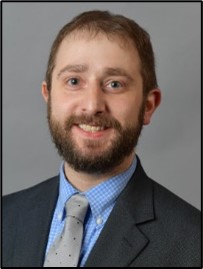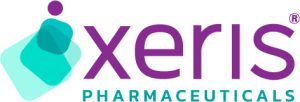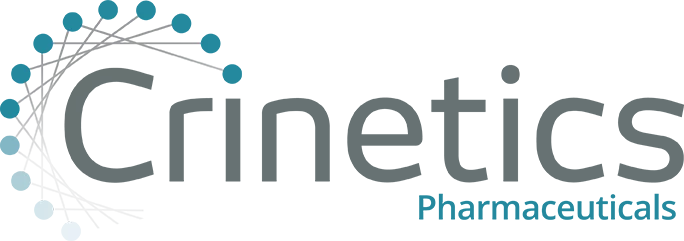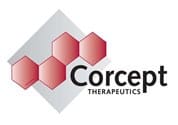News Articles February 2022
Written on 04 February 2022.
News Articles December 2025
Pituitary story: Long road to diagnosis
 A retired Methodist minister from Raleigh, North Carolina named Lib Campbell tells her pituitary story in an article on DailyAdvance.com. She struggled for many years before being diagnosed with a lesion on her pituitary. Read more: https://www.dailyadvance.com/opinion/editorial_columnists/lib-campbell-everyone-is-deserving-of-affordable-health-care-insurance/article_d8ba7dd4-0d19-5eff-80d6-97fa1b598855.html
A retired Methodist minister from Raleigh, North Carolina named Lib Campbell tells her pituitary story in an article on DailyAdvance.com. She struggled for many years before being diagnosed with a lesion on her pituitary. Read more: https://www.dailyadvance.com/opinion/editorial_columnists/lib-campbell-everyone-is-deserving-of-affordable-health-care-insurance/article_d8ba7dd4-0d19-5eff-80d6-97fa1b598855.html
Pituitary case study: Early signs of acromegaly
Cureus.com features a case study on a 35-year-old man who went to the emergency room for dizzy spells. He also suffered from night sweats, his face was changing progressively, he snored and stopped breathing while resting. Tests showed a pituitary tumor; doctors diagnosed him with acromegaly. Read more:
Pituitary story: Soccer teammates come to the aid of 12-year-old pituitary patient
An article in the Connaught Tribune follows the story of a young girls’ soccer team in Ireland that is raising money toward medical care for two of the young teammates. A 12-year-old girl named Aoife is battling a pituitary tumor, and her friend, 13-year-old Emma has been diagnosed with Langerhans cell histiocytosis. Read more: https://connachttribune.ie/football-community-unites-behind-young-team-mates-both-battling-serious-illness/
Study examines role of age, gender, and stress in pituitary lobe volume
A study featured in Nature.com looks at the way the posterior and anterior lobes of the pituitary change over time and show differences according to gender and stress level. Results show that older adults had a smaller anterior lobe and a larger posterior lobe. They also showed less stress. Women generally have a larger anterior lobe than men. Read more: https://www.nature.com/articles/s41598-025-26558-0
Research explores autism in children whose mothers suffer thyroid imbalance in pregnancy
An article in Science Daily looks at an Israeli study that found that mothers who experience thyroid hormone imbalance in pregnancy and go untreated have a higher risk of bearing children with autism. They recommend thyroid checks in pregnancy, as the risk decreases when the thyroid issue is treated. Read more: https://www.sciencedaily.com/releases/2025/11/251129053353.htm
PNA Highlights December 2025
“Write down the things that are on your mind. The simple act of listing your thoughts can have a cathartic and healing effect.” – Julia Laflin
PNA Spotlight: Dr. João Paulo Almeida, MD PhD
This month the PNA Spotlight focuses on Dr. João Paulo Almeida, the Robert L. Campbell Scholar in Neurological Surgery, Associate Professor of Clinical Neurological Surgery and Director of Skull Base and Pituitary Surgery at Indiana University/IU Health in Indianapolis. He earned his medical degree at the School of Medicine of the Universidade Federal do Ceará and completed his neurosurgery residency at State University of Campinas. He also trained at Toronto Western Hospital / University of Toronto as a clinical fellow in neuro-oncology and skull base surgery and cerebrovascular surgery. He then served as an advanced endoscopic and open skull base surgery fellow at Cleveland Clinic, in Cleveland, Ohio. He joined Mayo Clinic in Jacksonville, Florida in 2021, and came to Indiana University last year. Dr. Almeida answered a few questions from PNA. His answers are below.
Please tell us about your educational journey.
I was born and raised in Brazil. I did my original residency training in São Paulo, where I worked with a very well recognized team in microsurgery. In 2016, I came to the University of Toronto in Canada for a fellowship in skull base surgery. I spent two years with that group, and then I went to the Cleveland Clinic in Ohio for one additional year of fellowship.
Read More Here
PNA Medical Corner: PNA Medical Corner: Acromegaly and nearby tissues
This month the PNA Medical Corner features a study coauthored by a member of the PNA: Dr. Manuel Ferreira, vice chair of neurosurgery at the University of Washington Medical Center. The study looks at 113 cases of acromegaly, looking for spread to nearby tissues, and found that microscopic invasion of adjacent tissues is common and can lead to “failure of surgical remission.”
https://pubmed.ncbi.nlm.nih.gov/41317589/
J Clin Neurosci. 2025 Nov 28:143:111771. doi: 10.1016/j.jocn.2025.111771. Online ahead of print.
Tumor characteristics and clinical outcomes in 113 patients with acromegaly: exploratory analysis of the role of histologic invasion of adjacent tissues
Jessica C Eaton 1, Shreya Swaminathan 2, Fatima M El-Ghazali 3, Jacob J Ruzevick 3, Samuel N Emerson 3, Jordan E Perlman 4, Olga Lucia Paredes 3, Shaun Saurowitz 3, Thomas Hanks 3, Spencer Raub 3, Kyly Hiatt 3, Eric Lassitter 3, Mallory Tucker 3, Kristen Moe 5, Courtney E Francis 6, Richard Alan Failor 7, Anthony Desantis 7, Luis F Gonzalez-Cuyar 8, Kathryn Weaver 7, Brent Wisse 7, Manuel Ferreira Jr 3
Affiliations Expand
41317589 10.1016/j.jocn.2025.111771
Abstract
Background: Acromegaly, almost always caused by growth-hormone (GH)-secreting pituitary adenomas (PAs), leads to significant morbidity and mortality when left untreated. Surgical resection is the gold standard treatment, but biochemical remission following surgery occurs in only 40-60% of patients. We aimed to investigate characteristics of and outcomes in a large cohort of patients who underwent surgery for treatment of acromegaly from a GH-secreting tumor.
Methods: We analyzed a cohort of 113 patients who underwent surgery for resection of GH-secreting PAs at a single institution. We evaluated tumor characteristics and clinical and histopathologic factors affecting remission rates following surgery. Additionally, a smaller cohort of 20 GH-secreting PAs were found to have histologic evidence of invasion of either the bone, mucosa, cavernous sinus walls, or other dura. We investigated the characteristics of invasion and its prognostic value for these tumors.
Results: A total of 113 patients underwent resection of GH-secreting PAs. Histologic analysis revealed invasion of bone, dura, or mucosa in 20 patients (17.7 %). Of the total cohort, 66 patients (58.4 %) achieved biochemical remission with surgery alone. An additional 6 patients (5.3 %) achieved remission with meds, and 5 patients (4.4 %) achieved remission with additional surgery. In patients with evidence of invasion, pre-operative growth hormone levels were higher (32.0 vs 15.5, p = 0.020), tumors were larger (6.2 vs 3.0 cm3, p = 0.011) and the risk of post-operative CSF leak was higher (25 % vs 9.7 %, p = 0.012). There was a trend toward lower odds of biochemical remission in patients with invasive tumors (OR = 0.348, p = 0.058).
Conclusions: In patients undergoing resection of growth hormone-secreting tumor for treatment of acromegaly, microscopic invasion of tissues is relatively common and portends an increased risk of failure of surgical biochemical remission. Identification of microscopic invasion may allow for more aggressive surgical management and better chances of surgical control of disease.
Count on your Xeris CareConnection™ Team for unparalleled Cushing’s Support
Cushing’s can be challenging, but there is support so patients can feel like themselves again. The main goal of treating Cushing’s is to get cortisol levels back to normal. This Pituitary Awareness Month, Xeris Pharmaceuticals® is highlighting the importance of one-on-one support for patients living with Cushing’s Syndrome and support for HCPs treating Cushing’s Syndrome.
Sign up to get dedicated support:
Patients: Sign up for support | Recorlev® (levoketoconazole)
HCP’s: Connect with Xeris support | RECORLEV® (levoketoconazole)
Have more questions? Call for more support at 1-844-444-RCLV (7258)
Copyright © 2024 Pituitary Network Association All rights reserved.
Disclaimer: PNA does not engage in the practice of medicine. It is not a medical authority, nor does it claim to have medical expertise. In all cases, PNA recommends that you consult your own physician regarding any course of treatment or medication.
Our mailing address is:
Pituitary Network Association
P.O. Box 1958
Thousand Oaks, CA 91358
(805) 499-9973 Phone - (805) 480-0633 Fax
Email [email protected]
You are receiving this Newsletter because you have shown interest in receiving information about our activities.
If you do not want to receive any more emails from PNA, Unsubscribe.
Research Articles December 2025
Mapping the evolution of pediatric craniopharyngioma research: a bibliometric analysis.
Frome S, Dastagirzada Y, Kurland D, Wisoff J.Childs Nerv Syst. 2025 Nov 29;41(1):389. doi: 10.1007/s00381-025-07050-6.
The interdisciplinary management of craniopharyngioma – practice patterns, outcomes, and insights.
Haselmann J, Roohani S, Wasilewski D, Onken J, Capper D, Kaul D, Ehret F.BMC Cancer. 2025 Nov 28. doi: 10.1186/s12885-025-14991-3. Online ahead of print.
Pituitary Surgery
Training in endoscopic endonasal surgery: EANS young neurosurgeons committee survey.
Zoli M, Aldea C, Bauer M, Belo D, Drosos E, Jadoon S, Kaprovoy S, Lepic M, Lippa L, Mohme M, Motov S, Spiriev T, Stastna D, Stengel FC, Raffa G.Neurosurg Rev. 2025 Nov 28;49(1):31. doi: 10.1007/s10143-025-03962-8.
Joustra GE, van Rhee NF, den Heijer MC, Korsten-Meijer AGW, Feijen RA, Halmos GB, Kuijlen JMA, Vermeulen KM.Head Neck. 2025 Nov 28. doi: 10.1002/hed.70103. Online ahead of print.’
Cushing’s Disease
Hypercoagulability in Cushing’s syndrome: past, present, future.
Akirov A, Fleseriu M.Arch Endocrinol Metab. 2025 Nov 28;70(special 1):e250062. doi: 10.20945/2359-4292-2025-0095.Review.
Editor’s note: Dr Fleseriu is a longtime member of the PNA.
Lyu X, Liu J, Zhang D, Zhang X, Zhu H, Chen S, Lu L, Pan H.BMC Endocr Disord. 2025 Nov 27;25(1):275. doi: 10.1186/s12902-025-02092-y.
Hypophysitis
Primary hypophysitis: Classification review.
Turin CG, Kleinschmidt-DeMasters BK.J Neuropathol Exp Neurol. 2025 Nov 29:nlaf135. doi: 10.1093/jnen/nlaf135. Online ahead of print.41317043
Miquel L, Testud B, Albarel F, Appay R, Graillon T, Cuny T, Dufour H, Ebbo M, Brue T, Jarrot PA, Schleinitz N, Castinetti F.Nat Rev Endocrinol. 2025 Nov 27. doi: 10.1038/s41574-025-01200-1. Online ahead of print.
AI/ Machine Learning
Subba AB, Sunaniya AK, Mukherjee A.IEEE J Biomed Health Inform. 2025 Nov 27;PP. doi: 10.1109/JBHI.2025.3638154. Online ahead of print.
Hormonal health
Differential role of anterior and posterior pituitary lobes in healthy aging and perceived stress.
Doucet GE, Davis M, Mertens AT, Picci G.Sci Rep. 2025 Nov 27;15(1):42409. doi: 10.1038/s41598-025-26558-0.
Li G, Li M, Xie B, Chen J, Li S, Luo S, Mo C.World Neurosurg. 2025 Nov 28:124692. doi: 10.1016/j.wneu.2025.124692. Online ahead of print.
Large-scale comparison of two immunoassays for adrenocorticotropic hormone in human plasma.
Li Y, Louie JZ, Burgess TE, Bare LA, McPhaul MJ.Sci Rep. 2025 Nov 29. doi: 10.1038/s41598-025-26501-3. Online ahead of print.
Leibnitz S, Christ-Crain M, Atila C.Arch Endocrinol Metab. 2025 Nov 28;70(special 1):e20250259. doi: 10.20945/2359-4292-2025-0259.Review.
Diagnostic/Research
EndoCompass Project: Research Roadmap for Reproductive and Developmental Endocrinology.
Cools M, Krausz C, Juul A, Macut D, Andersen MS, Andersson AM, Andoniadou CL, Ahmed SF, Bakker J, Bashamboo A, Behre HM, Bonomi M, Busch AS, De Roo C, Dessens A, Fakhar-I-Adil M, Fanelli F, Fisher AD, Flück C, Gambineri A, Giwercman A, Gravholt CH, Hannema S, Heindryckx B, Hiort O, Hornig NC, Howard S, Ibáñez L, Jensen MB, Jørgensen N, Livadas S, Lucas-Herald A, Mastorakos G, Meriggiola MC, Ong K, Palibrk MO, Pignatelli D, Pitteloud N, Rajpert-De Meyts E, Rey R, Robeva R, Pozza C, Schlatt S, Spaggiari G, Tack L, Tena-Sempere M, Tournaye H, T’Sjoen G, Van Mello N, Vena W, Yildiz BO, de Zegher F.Horm Res Paediatr. 2025 Nov 27:1-23. doi: 10.1159/000549203. Online ahead of print.
EndoCompass and Neuroendocrine Tumor Endocrinology.
Castano JP, Dattani MT, Grozinsky-Glasberg S, Karavitaki N, Pavel ME, Andoniadou C, Alexandraki K, Capatina C, Cerbone M, Ferone D, Gan HW, Hofland J, Hofland L, Ibanez-Costa A, Ilie MD, Isidori AM, Korbonits M, Kos-Kudła B, Maghnie M, Mantovani G, Marazuela M, Raverot G, Scarpa A, Schilbach K, Theodoropoulou M, van Santen HM, Zatelli MC.Horm Res Paediatr. 2025 Nov 27:1-16. doi: 10.1159/000549145. Online ahead of print.
PNA Spotlight: Dr. João Paulo Almeida, MD PhD
PNA Spotlight: Dr. João Paulo Almeida, MD PhD

This month the PNA Spotlight focuses on Dr. João Paulo Almeida, the Robert L. Campbell Scholar in Neurological Surgery, Associate Professor of Clinical Neurological Surgery and Director of Skull Base and Pituitary Surgery at Indiana University/IU Health in Indianapolis. He earned his medical degree at the School of Medicine of the Universidade Federal do Ceará and completed his neurosurgery residency at State University of Campinas. He also trained at Toronto Western Hospital / University of Toronto as a clinical fellow in neuro-oncology and skull base surgery and cerebrovascular surgery. He then served as an advanced endoscopic and open skull base surgery fellow at Cleveland Clinic, in Cleveland, Ohio. He joined Mayo Clinic in Jacksonville, Florida in 2021, and came to Indiana University last year. Dr. Almeida answered a few questions from PNA. His answers are below.
Please tell us about your educational journey.
I was born and raised in Brazil. I did my original residency training in São Paulo, where I worked with a very well recognized team in microsurgery. In 2016, I came to the University of Toronto in Canada for a fellowship in skull base surgery. I spent two years with that group, and then I went to the Cleveland Clinic in Ohio for one additional year of fellowship. Then I returned to Toronto, and I spent one more year as a cerebral vascular fellow there. In 2021, I joined the Mayo Clinic in Jacksonville, Florida, where stayed for three years as an assistant professor and associate surgeon. In November 2024, I came to Indiana to become the Robert Campbell associate professor of neurosurgery in the Department of Neurosurgery at Indiana University in Indianapolis. I am the director of skull base surgery for the Indiana University Skull Base program, and I am director of skull base programs for the Department of Neurosurgery, and the director of the micro neurosurgery at the Skull Base Laboratory here at Indiana University.
What led you to be interested in pituitary medicine, and who are your mentors?
I have been lucky to have multiple mentors. It all started when I was in medical school. Initially I was trying to find mentors to help me with research, and I was lucky enough to be in a hospital where Dr. Jackson Gondim practiced. Dr. Gondim was one of the pioneers in endoscopic pituitary surgery, and had been doing that type of surgery since 1998 in my hometown in Brazil. Those were the first academic papers of my career. Dr. Gondim is retired now, but we published some of the most impactful papers that I have ever worked on. He taught me the basics of endoscopic skull base surgery and clinical pituitary research.
From there, to continue my interest in microsurgical anatomy, I did my residency training in São Paulo with a world-renowned surgeon who has since passed away, named Dr. Evandro de Oliveira. My main mentor in endoscopic skull base surgery is Dr. Fred Gentilli, from Canada. Dr. Gentilli really helped me to further embrace the importance of endoscopic skull base surgery in the care of our patients. We had a chance to collaborate in many projects, both in Toronto and elsewhere.
What would you like people to know about the pituitary program at Indiana University?
I truly believe in the human touch. That’s the priority in everything we do. I think we should treat people like we would like to be treated, and how we would like our family to be treated. That’s number one. The second point is that we believe in excellence of care, which really comes with a focus on specialized care. I’m focused on skull base surgery and pituitary surgery, and that’s 90% of my practice. Pituitary is at least 50% of my practice. And finally, we truly believe in the multidisciplinary work that we bring to the table, with a collaboration of ENT and neurosurgery and endocrinology, radiation oncology, neuro-oncology, radiology and much more.
One of the unique things that we have here, is this collaboration between the operating room and the microsurgical anatomy laboratory. Here, we’re very blessed to have a center where I host people from across the nation and the globe. Right now, I have five surgeons: two from Turkey, one from Brazil, one from Italy, and one from Colombia, all training in the laboratory on how to become better at endoscopic skull base surgery. In addition I have my clinic fellow in skull base surgery, who is here from Indiana. That opportunity to really bring into the operating room an understanding of microsurgical anatomy allows us to become better surgeons, but also to deliver better care to our patients. We educate more surgeons so that they can also deliver excellent results to their patients.
What do you think is the future of neurosurgery: the next big thing?
Right now, many of us are looking at how we can further incorporate artificial intelligence into our practice. A-I can aid the decision-making process and improve our understanding of the behavior of diseases, so that we can better predict tumor behavior and patient outcomes. This is key to current clinical research. We are also looking at the technical aspects of surgery. We are collaborating with other centers to study how artificial intelligence can play a role in identification of structures in the brain and prediction of outcomes in surgery. There are different models that have been demonstrated to be impactful, especially when put in collaboration with pathological, radiological, and clinical data. I anticipate that in the next five to ten years, artificial intelligence is going to become more of a routine to us, rather than the exception.
Please elaborate on how AI can help during surgery.
During endoscopic skull base surgery nowadays, we have surgical video. We can now use that real-time imaging to educate computer-based systems, which can identify structures, for example, in Cushing’s disease. If we train a system well enough, it can help us to differentiate what is normal pituitary tissue from what is not, especially in collaboration with navigation data. So, we anticipate that these systems will become more robust. Our lab has a huge amount of visual data that can be incorporated into A-I systems. Over time, we’re going to be able to use that technology to aid identification of structures such as tumors infiltrating the medial wall of the cavernous sinus, microadenomas, and things that we just can’t see with eyes alone.
What led you to become involved with the PNA?
My first contact with the Pituitary Network Association was two or three years ago, when I was at the Mayo Clinic in Jacksonville, Florida and had a chance to present a webinar to PNA. I had heard of the PNA through some of my colleagues, like Dr. Daniel Prevedello, and others. So, I’m familiar with the work that is done to educate both patients and providers. Since then, I have spoken at PNA webinars. The PNA has excellent impact within the pituitary patient and provider community.
PNA Highlights October 2024
“Your body holds deep wisdom. Trust in it. Learn from it. Nourish it. Watch your life transform and be healthy.”
– Bella Bleue
PNA Spotlight: Dr. Yuval Eisenberg
This month the PNA Spotlight shines on Dr. Yuval Eisenberg. Dr. Eisenberg graduated from Rush Medical College at Rush University Medical Center in 2009. He works in Chicago, IL and two other locations and specializes in internal medicine as well as endocrinology, diabetes & metabolism. Dr. Eisenberg is also affiliated with the University of Illinois Hospital Health & Science Center. He was kind enough to answer some of our questions:
What inspired you to choose your career path?
My career path was guided by my interaction with patients and my mentors. The highlight of my medical school training was helping to diagnose a young man suffering from multiple endocrine neoplasia type 1 (MEN1), a rare genetic disorder causing multiple tumors, including a pituitary adenoma. Listening to his concerns and thinking outside the box, I helped provide him with the correct diagnosis and treatment plan – and started my journey into endocrinology. I have been fortunate to work with excellent clinician-educators in my career. Learning about and observing the care of patients with endocrine-related problems was fascinating and rewarding. The farther I got in my training, the more I realized that endocrinology was my passion and that patients with pituitary disorders would be my sub-focus. Patients with pituitary disease are a unique population who are in need of education, support and reassurance at diagnosis – and they often require long-term follow-up. This allows for time to develop a bond of trust; an aspect of medical practice I thoroughly enjoy.
Safeguarding the nose during pituitary tumor surgery
Pituitary tumors are typically removed through the nose during endoscopic transnasal transsphenoidal surgery. Although minimally invasive, that approach requires expertise to minimize surgical trauma to the nose. Fortunately, surgeons are using new techniques that help safeguard the nose and maximize patients’ quality of life after surgery.
“The tendency now is to be less invasive in the approach through the nose,” explains Dr. Carlos D. Pinheiro Neto, a Mayo Clinic ENT/head and neck surgeon. “A very aggressive approach can cause chronic nasal crusting and infections, scabbing, decreased sense of smell and taste, and changes in the nose’s appearance.”
In endoscopic transnasal transsphenoidal surgery, a small surgical camera and surgical instruments are placed through the nostrils to access the tumor through the sinuses. Mayo Clinic was among the first institutions to extensively research the approach. As initially developed, the procedure involved extensive nasal resection.
“The idea was to create a maximum opening of the sinuses to allow neurosurgeons to reach and remove the tumor from the skull base,” Dr. Pinheiro Neto says. “The nasal physiology and sinus symptoms after the surgery were not a priority — the nose was just a corridor to the tumor.”
Now, Dr. Pinheiro Neto is pioneering surgical techniques that minimize resection of the nasal and sinus structures. One involves leaving intact the middle turbinate, which plays important roles in nasal airflow, warming and filtering air to the lungs, and smelling. Another is using a nasal-floor graft to provide a seal between the nose and brain after tumor removal. The standard procedure when cerebrospinal fluid leaks during surgery involves a nasal septal flap created from the septum — the tissue that separates the nostrils’ two airways.
“Nasal graft is much better for patients. It avoids the exposure of the nasal septum cartilage, so there is less crusting and faster healing,” Dr. Pinheiro-Neto says. “Nasal septal flaps can also cause a structural collapse in the nasal bridge and increase the risk of septal perforations. Since changing our paradigm from nasal septal flap for pituitary surgery, our leak rate is 0.1%.”
The new techniques are based on research conducted in Mayo Clinic’s anatomy laboratory. Those lessons are translated to the operating room, where ENT/head and neck surgeons routinely work alongside neurosurgeons to remove pituitary tumors.
“That research has allowed us to achieve the same level of tumor resection and treatment outcomes, but with fewer complications,” Dr. Pinheiro-Nato says. “With time and experience, we have realized it’s possible to preserve most of the nose and still get good space in the back of the sinus for tumor removal.
“This is about improving patients’ quality of life,” Dr. Pinheiro-Neto says. “They can have a nasal procedure but after a few weeks of healing, the nose and nasal physiology, and the sinuses, are as good as ever before.”
Stanford Hosts Pituitary Patient Education Day
Stanford University invites the public to their free pituitary patient education day, to be held both in-person and via zoom on Saturday November 9th, 2024. The event will run from 8am-5pm and will take place in the Assembly Hall at Stanford Hospital.
The course co-directors include neurosurgeon Juan C. Fernandez-Miranda, MD (a longtime member of the PNA), and endocrinologist Julia Chang, MD. Topics to be discussed include the function of the pituitary gland, endonasal endoscopic surgery, cavernous sinus surgery, radiotherapy, Cushing’s, acromegaly, prolactinoma and more.
Count on your Xeris CareConnection™ Team for unparalleled Cushing’s Support
Cushing’s can be challenging, but there is support so patients can feel like themselves again. The main goal of treating Cushing’s is to get cortisol levels back to normal. This Pituitary Awareness Month, Xeris Pharmaceuticals® is highlighting the importance of one-on-one support for patients living with Cushing’s Syndrome and support for HCPs treating Cushing’s Syndrome.
Sign up to get dedicated support:
Patients: Sign up for support | Recorlev® (levoketoconazole)
HCP’s: Connect with Xeris support | RECORLEV® (levoketoconazole)
Have more questions? Call for more support at 1-844-444-RCLV (7258)
Copyright © 2024 Pituitary Network Association All rights reserved.
Disclaimer: PNA does not engage in the practice of medicine. It is not a medical authority, nor does it claim to have medical expertise. In all cases, PNA recommends that you consult your own physician regarding any course of treatment or medication.
Our mailing address is:
Pituitary Network Association
P.O. Box 1958
Thousand Oaks, CA 91358
(805) 499-9973 Phone - (805) 480-0633 Fax
Email [email protected]
You are receiving this Newsletter because you have shown interest in receiving information about our activities.
If you do not want to receive any more emails from PNA, Unsubscribe.
News Articles October 2024
New acromegaly drug on the horizon
A new drug for treatment and long-term maintenance therapy for acromegaly is now on the horizon. Crinetics Pharmaceuticals recently submitted its first new drug application (NDA) to the U.S. Food and Drug Administration for paltusotine, which is a once-daily oral selectively-targeted somatostatin receptor type 2 nonpeptide agonist.
Crinetics says researchers used data from from 18 clinical trials in the application, including two Phase 3 trials that evaluated paltusotine for acromegaly in medically untreated and treated patients. Patients tolerated the treatment well, the medication achieved biochemical control by maintaining IGF-1 levels and improved patients’ symptoms compared to placebo. The company says it expects to hear back from the FDA by December.
Paltusotine, is the first drug of its type to complete Phase 3 clinical development for acromegaly and is now in Phase 2 clinical development for carcinoid syndrome associated with neuroendocrine tumors. Read the company’s press release here.
Can machine learning to predict hormone deficiency after pituitary surgery?
A study featured on Nature.com used machine learning algorithms to predict whether patients would develop arginine vasopressin deficiency after transsphenoidal surgery to remove a pituitary adenoma. Read more here: https://www.nature.com/articles/s41598-024-72486-w
Pituitary apoplexy strikes groom on wedding day
An article in People.com tells the story of a groom in England who had to leave his wedding reception early due to a severe headache – one that turned out to be a hemorrhaging pituitary tumor. Read more here: https://people.com/groom-migraine-wedding-day-tumor-popped-8718083
Researchers try to make synthetic oxytocin for pain relief
An article in the Focus.news looks at efforts to replicate the hormone oxytocin in the lab – in an effort to develop a painkiller that would be safer than opioids. Read more here: https://www.thefocus.news/lifestyle/scientists-are-hoping-to-replicate-the-cuddle-hormone-for-healthy-long-term-pain-relief/
PNA Spotlight: Dr. Leena Shahla

This month the PNA Spotlight focuses on endocrinologist Dr. Leena Shahla, director of the Duke Pituitary Center, part of Duke Health in Durham, North Carolina. The program is listed by the PNA as a center of pituitary excellence. Dr. Shahla graduated medical school at Al-Baath University (in Homs, Syria), did her residency in internal medicine at St. Joseph’s at New York Medical College, and completed a fellowship in endocrinology at the University of Massachusetts Medical School. Her pituitary focus has grown significantly over the years. She initiated the pituitary tumor board at the University of Florida, Jacksonville, and later built the pituitary clinic at the University of Arizona, Phoenix. She arrived at Duke this past July. Dr. Shahla was kind enough to answer a few questions from the PNA. Below is the conversation.
Please tell us about your work at Duke.
At Duke, I am the neuroendocrinologist and medical director of Duke Pituitary Center. Our multidisciplinary team includes specialists in neurosurgery, neuro-ophthalmology, ENTs, neuro-oncology, and neuro-radiology. We run a multi-disciplinary clinic. When patients visit for evaluation, they often start with visual field testing, followed by appointments with me and one of the neurosurgeons, all in one place. We all collaborate closely behind the scenes to make the best plan for each patient.
What inspired you to choose this career path?
My interest in hormones and their role in regulating various physiological systems led me to specialize in endocrinology. And then, as I realized the significant impact of the pituitary on the endocrine system, I found the challenge of diagnosing and treating pituitary conditions fascinating, much like solving a complex puzzle. So ultimately, that inspired me to specialize in pituitary disorders.
What is the primary focus of your work or research?
We’re working on a study on the link between hypogonadism and prolactinoma. We are also going to be looking into early diagnosis of Cushing’s and acromegaly.
How has endocrinology evolved since you got into it, and where do you think it’s going?
Medicine today is more advanced than ever. Especially in my specialty, there have been advancements in pituitary-focused diagnostic tests and new treatments continue to emerge. This progress is especially beneficial for complex cases that previously had limited treatment options. The field is moving forward with studies and clinical trials underway. Cushing’s and acromegaly are rare diseases and often leave patients suffering for years before diagnosis. However, with greater public awareness and improved testing, patients are being diagnosed earlier.
What should patients know about endocrinology? What needs more awareness?
Cushing’s Syndrome and acromegaly deserve more awareness, as many patients go undiagnosed for long periods. Not all cases present with obvious symptoms making it crucial for primary care physicians and other providers to recognize early signs. When patients are diagnosed in advanced stages, treatment becomes more challenging. Raising awareness can guide physicians to screen for Cushing’s syndrome and acromegaly or refer patients to endocrinology. This proactive approach can help us identify, diagnose, and treat patients sooner.
What are some of the signs that doctors and patients should be looking for, for acromegaly and Cushing’s?
Both patients and providers should be aware of certain signs and symptoms, although they can be subtle or develop gradually.
For Cushing’s, signs could be unexplained weight gain, easy bruising, muscle weakness, mood changes (anxiety, depression, irritability), uncontrolled diabetes, or hypertension.
For acromegaly, some of signs are facial changes, hand and feet growth (increased ring or shoe size), joint pain and swelling, tingling in hands, jaw changes or pain, and widening of spaces between the teeth.
Early detection of these signs combined with diagnostic tests can help lead to timely intervention and management
What would you like to convey about yourself to your patients?
I believe that the doctor-patient relationship is built on communication, empathy, and trust. I am thorough in my approach, and when I meet patients, especially for the first time, I prioritize listening to their concerns, making sure I answer their questions and explain their conditions clearly so they understand. And I involve them actively in the decision-making process.
Empathy is essential, especially during the diagnosis and early stages of treatment before patients start feeling better. They need support, hand-holding, and understanding because they are often struggling physically, mentally, and emotionally. It is important to listen to their concerns patiently and guide them without getting frustrated. While we may not be able to cure everything, we can keep the disease very well-controlled, allowing them to feel better and supported.
What made you want to get involved with the PNA?
I always wanted to be involved with the PNA because pituitary disorders are not that common, and this group provides invaluable support to patients. My goal is to contribute as much as possible to help patients and community providers recognize the disease early. Patients must be referred to centers with the right resources for diagnosis and treatment. At the end of the day, we all care deeply about our patients’ well-being.
PNA Highlights October 2024
“Your body holds deep wisdom. Trust in it. Learn from it. Nourish it. Watch your life transform and be healthy.”
– Bella Bleue
PNA Spotlight: Dr. Yuval Eisenberg
This month the PNA Spotlight shines on Dr. Yuval Eisenberg. Dr. Eisenberg graduated from Rush Medical College at Rush University Medical Center in 2009. He works in Chicago, IL and two other locations and specializes in internal medicine as well as endocrinology, diabetes & metabolism. Dr. Eisenberg is also affiliated with the University of Illinois Hospital Health & Science Center. He was kind enough to answer some of our questions:
What inspired you to choose your career path?
My career path was guided by my interaction with patients and my mentors. The highlight of my medical school training was helping to diagnose a young man suffering from multiple endocrine neoplasia type 1 (MEN1), a rare genetic disorder causing multiple tumors, including a pituitary adenoma. Listening to his concerns and thinking outside the box, I helped provide him with the correct diagnosis and treatment plan – and started my journey into endocrinology. I have been fortunate to work with excellent clinician-educators in my career. Learning about and observing the care of patients with endocrine-related problems was fascinating and rewarding. The farther I got in my training, the more I realized that endocrinology was my passion and that patients with pituitary disorders would be my sub-focus. Patients with pituitary disease are a unique population who are in need of education, support and reassurance at diagnosis – and they often require long-term follow-up. This allows for time to develop a bond of trust; an aspect of medical practice I thoroughly enjoy.
Safeguarding the nose during pituitary tumor surgery
Pituitary tumors are typically removed through the nose during endoscopic transnasal transsphenoidal surgery. Although minimally invasive, that approach requires expertise to minimize surgical trauma to the nose. Fortunately, surgeons are using new techniques that help safeguard the nose and maximize patients’ quality of life after surgery.
“The tendency now is to be less invasive in the approach through the nose,” explains Dr. Carlos D. Pinheiro Neto, a Mayo Clinic ENT/head and neck surgeon. “A very aggressive approach can cause chronic nasal crusting and infections, scabbing, decreased sense of smell and taste, and changes in the nose’s appearance.”
In endoscopic transnasal transsphenoidal surgery, a small surgical camera and surgical instruments are placed through the nostrils to access the tumor through the sinuses. Mayo Clinic was among the first institutions to extensively research the approach. As initially developed, the procedure involved extensive nasal resection.
“The idea was to create a maximum opening of the sinuses to allow neurosurgeons to reach and remove the tumor from the skull base,” Dr. Pinheiro Neto says. “The nasal physiology and sinus symptoms after the surgery were not a priority — the nose was just a corridor to the tumor.”
Now, Dr. Pinheiro Neto is pioneering surgical techniques that minimize resection of the nasal and sinus structures. One involves leaving intact the middle turbinate, which plays important roles in nasal airflow, warming and filtering air to the lungs, and smelling. Another is using a nasal-floor graft to provide a seal between the nose and brain after tumor removal. The standard procedure when cerebrospinal fluid leaks during surgery involves a nasal septal flap created from the septum — the tissue that separates the nostrils’ two airways.
“Nasal graft is much better for patients. It avoids the exposure of the nasal septum cartilage, so there is less crusting and faster healing,” Dr. Pinheiro-Neto says. “Nasal septal flaps can also cause a structural collapse in the nasal bridge and increase the risk of septal perforations. Since changing our paradigm from nasal septal flap for pituitary surgery, our leak rate is 0.1%.”
The new techniques are based on research conducted in Mayo Clinic’s anatomy laboratory. Those lessons are translated to the operating room, where ENT/head and neck surgeons routinely work alongside neurosurgeons to remove pituitary tumors.
“That research has allowed us to achieve the same level of tumor resection and treatment outcomes, but with fewer complications,” Dr. Pinheiro-Nato says. “With time and experience, we have realized it’s possible to preserve most of the nose and still get good space in the back of the sinus for tumor removal.
“This is about improving patients’ quality of life,” Dr. Pinheiro-Neto says. “They can have a nasal procedure but after a few weeks of healing, the nose and nasal physiology, and the sinuses, are as good as ever before.”
Stanford Hosts Pituitary Patient Education Day
Stanford University invites the public to their free pituitary patient education day, to be held both in-person and via zoom on Saturday November 9th, 2024. The event will run from 8am-5pm and will take place in the Assembly Hall at Stanford Hospital.
The course co-directors include neurosurgeon Juan C. Fernandez-Miranda, MD (a longtime member of the PNA), and endocrinologist Julia Chang, MD. Topics to be discussed include the function of the pituitary gland, endonasal endoscopic surgery, cavernous sinus surgery, radiotherapy, Cushing’s, acromegaly, prolactinoma and more.
Count on your Xeris CareConnection™ Team for unparalleled Cushing’s Support
Cushing’s can be challenging, but there is support so patients can feel like themselves again. The main goal of treating Cushing’s is to get cortisol levels back to normal. This Pituitary Awareness Month, Xeris Pharmaceuticals® is highlighting the importance of one-on-one support for patients living with Cushing’s Syndrome and support for HCPs treating Cushing’s Syndrome.
Sign up to get dedicated support:
Patients: Sign up for support | Recorlev® (levoketoconazole)
HCP’s: Connect with Xeris support | RECORLEV® (levoketoconazole)
Have more questions? Call for more support at 1-844-444-RCLV (7258)
Copyright © 2024 Pituitary Network Association All rights reserved.
Disclaimer: PNA does not engage in the practice of medicine. It is not a medical authority, nor does it claim to have medical expertise. In all cases, PNA recommends that you consult your own physician regarding any course of treatment or medication.
Our mailing address is:
Pituitary Network Association
P.O. Box 1958
Thousand Oaks, CA 91358
(805) 499-9973 Phone - (805) 480-0633 Fax
Email [email protected]
You are receiving this Newsletter because you have shown interest in receiving information about our activities.
If you do not want to receive any more emails from PNA, Unsubscribe.
October 2024 Research Articles
Pituitary Tumors
Duru M, Demir AN, Oz A, Kargin OA, Altunc AT, Demirel O, Arslan S, Kizilkilic O, Poyraz BC, Kadioglu P.J Endocrinol Invest. 2024 Oct 3. doi: 10.1007/s40618-024-02442-y. Online ahead of print.
Xu L, Lei Z, Wang Q, Jiang Q, Xing B, Li X, Guo X, Wang Z, Li S, Huang Y, Lei T.Antioxid Redox Signal. 2024 Oct 3. doi: 10.1089/ars.2024.0611. Online ahead of print.
Beyond Epistaxis: A Rare Case of Ectopic Sinonasal Adamantinomatous Craniopharyngioma.
Selva Kumaran K, Shamsudin NS, Dalip Singh HS, Devesahayam PR.Cureus. 2024 Sep 1;16(9):e68357. doi: 10.7759/cureus.68357. eCollection 2024 Sep.
Posterior pituitary tumors and other rare entities involving the pituitary gland.
Roncaroli F, Giannini C.Brain Pathol. 2024 Sep 30:e13307. doi: 10.1111/bpa.13307. Online ahead of print.PMID: 39350562 Review.
Pituitary Apoplexy in Pregnancy: Neonatal Implications.
Megan Y, Melissa S.Neoreviews. 2024 Oct 1;25(10):e660-e663. doi: 10.1542/neo.25-10-e660.
Zaher M, Kolmetzky DW, Al-Atrache Z, Vimawala S, Kolia NR, Godil SS.J Neurosurg Case Lessons. 2024 Sep 30;8(14):CASE24326. doi: 10.3171/CASE24326. Print 2024 Sep 30.
Zhang L, Yan S, Xie SK, Wei YT, Liu HP, Li Y, Wu HB, Wang HL, Xu PF.Endocr Connect. 2024 Sep 1:EC-24-0378. doi: 10.1530/EC-24-0378. Online ahead of print.
Acromegaly
Aliyeva T, Muniz J, Soares GM, Firdausa S, Mirza L.Pituitary. 2024 Oct 1. doi: 10.1007/s11102-024-01461-5. Online ahead of print.
Cushing’s
Braun LT, Vogel F, Nowak E, Rubinstein G, Zopp S, Ritzel K, Beuschlein F, Reincke M.Eur J Endocrinol. 2024 Oct 1:lvae127. doi: 10.1093/ejendo/lvae127. Online ahead of print.
Pituitary Surgery
De Nigris Vasconcellos F, Vilela MAD, Torrico FG, Scalise MA, Vargas VPS, Mendieta CD, Pichardo-Rojas P, Rosi MEA, Fleury LT, de Brito Rebelo ND, Benjamin C, Sheehan JP.Acta Neurochir (Wien). 2024 Oct 2;166(1):392. doi: 10.1007/s00701-024-06296-4.PMID: 39356336 Review.
Editor’s note: Dr. Sheehan is a member of the PNA.
Hormonal Health
Shimon I.Rev Endocr Metab Disord. 2024 Oct 2. doi: 10.1007/s11154-024-09902-z. Online ahead of print.PMID: 39356415 Review.
Saadeh NA, Obeidat M, Shboul M.Appl Clin Genet. 2024 Sep 26;17:143-149. doi: 10.2147/TACG.S466919. eCollection 2024.
PNA Spotlight: Dr. Yuval Eisenberg

This month the PNA Spotlight shines on Dr. Yuval Eisenberg. Dr. Eisenberg graduated from Rush Medical College at Rush University Medical Center in 2009. He works in Chicago, IL and two other locations and specializes in internal medicine as well as endocrinology, diabetes & metabolism. Dr. Eisenberg is also affiliated with the University of Illinois Hospital Health & Science Center. He was kind enough to answer some of our questions:
What inspired you to choose your career path?
My career path was guided by my interaction with patients and by my mentors. The highlight of my medical school training was helping to diagnose a young man suffering from multiple endocrine neoplasia type 1 (MEN1), a rare genetic disorder causing multiple tumors, including a pituitary adenoma. Listening to his concerns and thinking outside the box, I helped provide him with the correct diagnosis and treatment plan – and started my journey into endocrinology. I have been fortunate to work with excellent clinician-educators in my career. Learning about and observing the care of patients with endocrine-related problems was fascinating and rewarding. The farther I got in my training, the more I realized that endocrinology was my passion and that patients with pituitary disorders would be my sub-focus. Patients with pituitary disease are a unique population who are in need of education, support and reassurance at diagnosis – and they often require long-term follow-up. This allows for time to develop a bond of trust; an aspect of medical practice I thoroughly enjoy.
What is the primary focus of your work/research?
My main focus is my clinical endocrinology practice, and I see a variety of patients, but I have a specialized interest in patients with pituitary disorders. My research interest is in the hormone oxytocin and how it might affect patients with pituitary hormone deficiencies (hypopituitarism).
What do you consider to be the future of your field?
In my opinion, the future is in specialized and individualized expert care when providing for patients with pituitary disorders. Given the rarity of these diseases, patients are best served by providers with interest and experience. Also, the more we know about pituitary tumors and the genetics behind them, the better we will be able to predict patient outcomes and tailor our therapies.
What should patients know about your field/what deserves more recognition/awareness?
My feeling is that patients need to know that they can/should advocate to get the care they deserve from providers with interest and experience in caring for individuals with their condition. They should also utilize the excellent patient-centered resources (like the PNA) to help educate and direct their care.
What would you like to convey about yourself to your patients?
The best part of my job is helping patients (and their families) understand their condition, their prognosis and their options. It’s tremendously rewarding to help someone feel more comfortable with what is often a completely foreign, and sometimes scary sounding group of diseases. I strive to always spend the time and energy needed to make patients feel more at ease with and educated about their disease.
- Why did you get involved with the PNA and what is the extent of your involvement?
Early in my career, I became excited to become more involved. My mentor has also been involved in the PNA for many years and recommended I become involved, as he found it an excellent resource for patients and providers.
Available Now!

The Pituitary Patient Resource Guide Sixth Edition is now available! Be one of the first to have the most up-to-date information. The Pituitary Patient Resource Guide a one of a kind publication intended as an invaluable source of information not only for patients but also their families, physicians, and all health care providers. It contains information on symptoms, proper testing, how to get a diagnosis, and the treatment options that are available. It also includes Pituitary Network Association's patient resource listings for expert medical care.

Xeris Pharmaceuticals is valued member of the PNA










